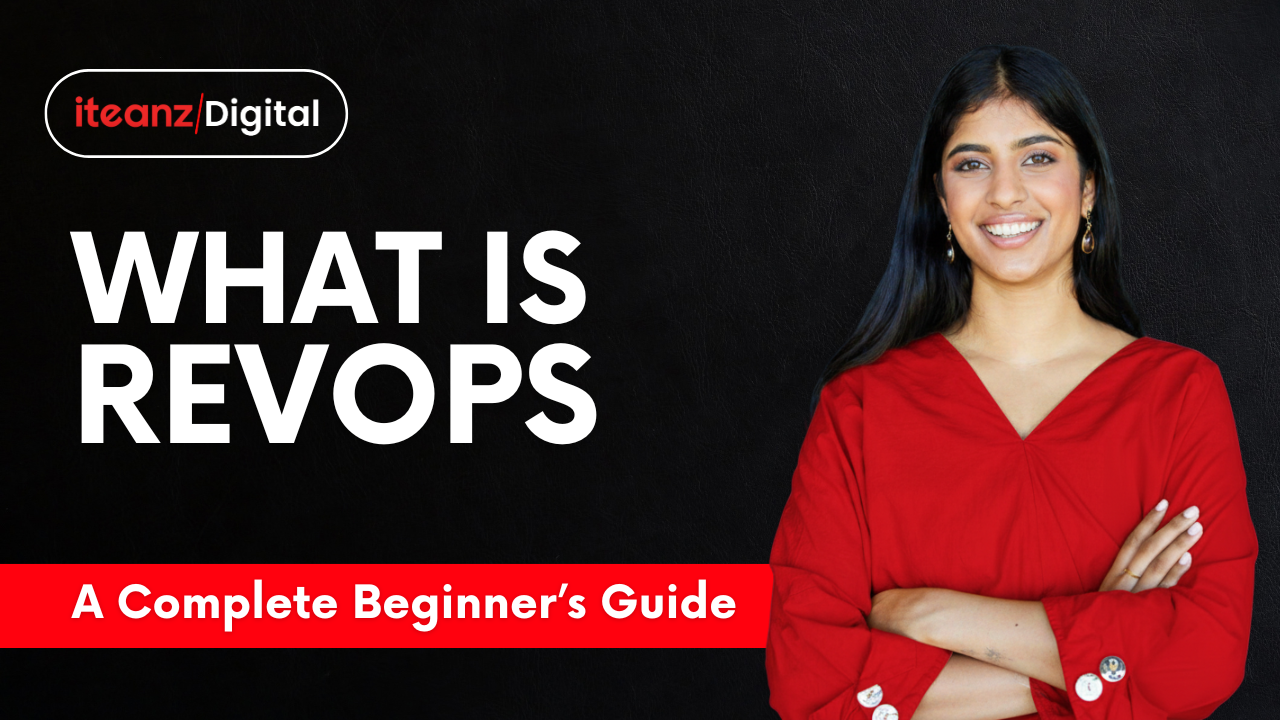RevOps Tutorial for Beginners: Align Marketing, Sales & Customer Success
- Chapter 1: What is Revenue Operations (RevOps)?
- Chapter 2: The RevOps Mindset
- Chapter 3: Understanding the RevOps Framework
- Chapter 4: RevOps for Marketing
- Chapter 5: RevOps for Sales
- Chapter 6: RevOps for Customer Success
- Chapter 7: Designing Your RevOps Tech Stack
- Chapter 8: Data Management in RevOps
- Chapter 9: Automating the Revenue Engine
- Chapter 10: Creating a RevOps Strategy
- Chapter 11: Building a RevOps Team
- Chapter 12: Change Management and Adoption
- Chapter 13: RevOps Maturity and Optimization
- Chapter 14: The Future of RevOps
- Chapter 15: Career in RevOps
What is Revenue Operations (RevOps)?
1. Defining RevOps and its Importance in Modern GTM organizations
Revenue Operations (RevOps) unifies Marketing, Sales, and Customer Success under shared tools, data, and goals to create predictable revenue growth. Instead of working in silos, teams collaborate through integrated systems. Companies with RevOps see faster growth and better forecasting due to aligned data and visibility.
2. The Evolution from Siloed Operations to Unified Revenue Growth
Earlier, marketing generated leads, sales closed deals, and customer success handled retention separately. This caused data gaps and inconsistent customer experiences. The shift to SaaS and recurring revenue models made coordination essential—leading to RevOps, which connects all revenue-impacting functions.
3. Benefits of Adopting RevOps Early in Business
- Consistent Reporting: Establishes a single source of truth across Marketing, Sales, and Customer Success.
- Process Efficiency: Streamlines operations and reduces duplication of efforts.
- Accurate Forecasting: Integrates data and analytics for reliable revenue predictions.
- Faster Decision-Making: Centralized insights help leadership act quickly and strategically.
- Lower Customer Acquisition Cost (CAC): Aligned teams spend less and convert more efficiently.
- Better Customer Experience: Seamless handoffs between departments improve satisfaction and retention.
- Scalable Growth: Builds a strong operational foundation that supports long-term expansion.
Recent Topics
Ultimate SEO Tutorial: Boost Your Website Traffic and Rankings
GTM Tutorial for Beginners: Learn Go-To-Market Strategies That Work
The RevOps Mindset
1. From Departmental Goals to Unified Revenue Goals
Traditional teams chase metrics like MQLs, deals closed, or retention rates—each optimized locally. RevOps shifts the focus to shared revenue outcomes (ARR, NRR, LTV). This alignment fosters accountability and eliminates “lead vs. conversion” debates.
A RevOps mindset asks, “How does this action contribute to total revenue?” rather than, “Did my department hit its quota?” The result is smoother collaboration and higher efficiency.
2. Key Principles of Collaboration, Data-Driven Decisions & Automation
RevOps runs on transparency + data. Decisions are based on dashboards and cross-functional insights instead of intuition. Automation handles repetitive tasks—lead routing, deal updates, renewal alerts—so teams can focus on strategy.
This principle embodies three C’s: Collaboration, Clarity, Consistency. When marketing automation syncs with CRM and customer success platforms, you eliminate manual gaps and deliver a unified customer experience.
3. Breaking Down Silos between Marketing, Sales, and Customer Success
RevOps bridges the gap by creating shared systems and SLAs (Service Level Agreements). For instance, marketing agrees to deliver qualified leads, sales commits to follow up within a set time, and customer success ensures smooth onboarding.
The central RevOps team monitors these touchpoints via one analytics hub. Regular cross-team reviews keep everyone aligned to customer journeys rather than departmental hand-offs.
Evolution of GTM Models
Understanding the RevOps Framework
1. The Four Pillars: Process, Platform, Data, and People
The RevOps framework stands on four pillars:
- Process: Standardized workflows for marketing, sales, CS.
- Platform: Integrated tools (CRM, automation, analytics).
- Data: Accurate, governed information for forecasting & insight.
- People: Trained operators ensuring cross-functional adoption.
Each pillar strengthens the others—platforms automate processes, data informs people, and people improve processes.

2. Aligning the Customer Journey from Lead to Renewal
RevOps aligns every stage—awareness, consideration, purchase, onboarding, retention—into a single flow. Each hand-off is mapped, measured, and improved. Marketing knows which campaigns create high-LTV customers; sales sees engagement scores; CS tracks renewal triggers.
This alignment builds a closed-loop system, ensuring that customer feedback continuously refines upstream processes.
3. The RevOps Maturity Model
- Organizations evolve through five stages:
- Ad Hoc: No unified processes; siloed data.
- Emerging: Basic cross-team collaboration.
- Defined: Documented processes; some tool integration.
- Integrated: Shared data hub; unified KPIs.
- Optimized: Fully data-driven automation and predictive intelligence.
Summary
Four Pillars: Process, Platform, Data, and People working in sync for alignment and efficiency.
Unified Journey: Connects marketing, sales, and CS from lead to renewal.
Maturity Growth: From Ad Hoc to Optimized — boosting accuracy and reducing churn.
RevOps for Marketing
1. How RevOps Transforms Marketing Strategy
In a traditional setup, marketing is focused on lead volume—producing as many leads as possible without always ensuring sales alignment. RevOps shifts that focus from quantity to quality and revenue impact.
Under RevOps, marketing campaigns are connected directly to pipeline creation and revenue attribution. Data from CRM, automation tools, and customer success systems feeds back into marketing analytics, revealing which campaigns actually drive revenue rather than just clicks or leads.
This alignment eliminates vanity metrics and ensures every rupee or dollar spent on campaigns ties to measurable business growth.
2. Aligning Campaigns with Revenue Outcomes
RevOps provides closed-loop reporting, connecting marketing performance to downstream metrics such as deal size, win rate, and retention. Marketing teams can finally answer the question: “Which campaign generated the most profitable customers?”
This is achieved by integrating CRM (Salesforce, HubSpot) with marketing automation tools and analytics dashboards.
Example: A campaign that yields fewer leads but higher deal conversion might be prioritized over one that delivers many unqualified leads.
RevOps encourages data-driven optimization, so marketing budgets are allocated to activities that drive the highest revenue yield.
3. Lead Scoring, Attribution, and Funnel Optimization
RevOps standardizes lead scoring based on engagement, firmographics, and intent signals. The model is built collaboratively with sales and customer success to ensure consistent definitions of “qualified lead.”
Attribution models—first touch, multi-touch, or data-driven—are set up so marketing can trace revenue impact precisely. Funnel optimization follows naturally: leaks between MQL → SQL → Opportunity are identified through dashboards and fixed via automation.
By establishing these mechanisms, RevOps transforms marketing from a cost center to a predictable growth driver.
Summary
RevOps shifts marketing from chasing leads to driving real revenue. By connecting campaigns with sales data and using shared analytics, teams see which efforts bring high-value customers. With clear lead scoring, attribution, and funnel optimization, marketing becomes a measurable growth engine.
RevOps for Sales
1. Sales Enablement through Data and Automation
RevOps provides sales teams with clean, actionable data and automated workflows. Instead of wasting time entering data or chasing unqualified leads, reps receive prioritized lead lists, AI-driven insights, and real-time deal alerts.
Automation tools streamline everything from follow-ups to quote approvals. This frees up sales reps to spend more time actually selling—improving productivity and morale.
Example: Predictive lead scoring models can automatically surface high-intent prospects, increasing conversion rates by up to 25 %.
2. Improving Sales Forecasting Accuracy
Accurate forecasting is the backbone of any revenue organization. RevOps centralizes data from CRM, pipeline analytics, and finance tools to create data-backed forecasts. Machine-learning algorithms can highlight pipeline risk, identify stalled deals, and predict closing probabilities.
The result is a clear view of expected revenue, enabling leadership to make informed investment and hiring decisions.
3. Standardizing the Sales Process and Reporting
Sales processes often differ by region or rep. RevOps enforces a consistent sales methodology—standard definitions for stages, uniform KPIs, and centralized dashboards.
This consistency improves accountability and comparability. Managers can track conversion rates, win/loss reasons, and deal velocity without ambiguity.
Forecast Accuracy
RevOps for Customer Success
1. The Role of Customer Success in Revenue Retention
Customer Success (CS) is now a major revenue driver, not just a support function. RevOps integrates CS data—usage metrics, NPS, churn signals—into the shared revenue dashboard.
This lets leadership track not only acquisition but also net revenue retention (NRR) and customer lifetime value (CLV).
With this visibility, CS teams can proactively engage customers showing risk signals, reducing churn and expanding upsells.
Example: A drop in product usage triggers an automated alert to the CS manager, prompting outreach before renewal time.
2. Building Customer Lifetime Value through RevOps Data
By analyzing product engagement, contract history, and feedback scores, RevOps teams identify opportunities for cross-sell and upsell. Marketing and CS collaborate on targeted campaigns for existing customers, while sales uses insights to tailor renewal conversations.
This data-driven collaboration increases CLV and stabilizes revenue growth—essential for SaaS and subscription businesses.
3. Churn Prediction and Proactive Engagement Strategies
Predictive analytics models (powered by AI or ML) can flag early churn risks—low product adoption, reduced log-ins, unresolved support tickets, or low NPS.
RevOps uses these signals to trigger automated workflows: CS reps receive reminders, customers get personalized engagement messages, and management sees churn probability dashboards.
Companies that adopt such RevOps-based churn prediction have reported up to 30 % improvement in renewal rates.
Summary
1. RevOps ensures marketing spends smarter, sales forecasts better, and customer success retains longer.2. It converts disconnected teams into one continuous revenue machine.
3. Data unification and automation eliminate guesswork, enabling sustainable, predictable growth.
Designing Your RevOps Tech Stack
1. Overview of Must-Have Tools: CRM, Marketing Automation, Analytics, and Integrations
A RevOps tech stack is the engine room of your revenue organization. The right tools connect every touchpoint across the customer journey and enable data-driven decisions.
Core components include:
- CRM (Customer Relationship Management): The central hub for leads, deals, and customer data (e.g., Salesforce, HubSpot).
- Marketing Automation: Tools like Marketo or HubSpot Marketing Hub that handle lead nurturing, scoring, and campaign tracking.
- Analytics & BI Platforms: Systems such as Tableau, Power BI, or Looker that visualize KPIs and performance trends.
- Integrations & Middleware: Platforms like Zapier or Workato that connect apps and sync data automatically.
- Each tool should not operate in isolation—RevOps integrates them into a single ecosystem to ensure seamless data flow and unified metrics.
2. How to Create a Unified Tech Ecosystem
A unified tech ecosystem means every department shares the same data reality. To achieve this, organizations must:
- Audit existing tools to eliminate overlaps and gaps.
- Define data ownership and governance for consistency.
- Integrate via APIs or middleware, ensuring bi-directional sync.
- Standardize field naming and data taxonomy across systems.
- When all tools share the same “language,” marketing automation syncs with CRM, CS platforms update renewals automatically, and dashboards reflect real-time business health.
- This not only saves operational hours but also reduces the cost of tool sprawl—studies show that unified stacks can reduce tech expenses by up to 20 %.
3. Best RevOps Tools in 2025 (HubSpot, Salesforce, Gong, etc.)
By 2025, the RevOps software landscape has matured significantly. The leading tools include:
- HubSpot RevOps Suite – All-in-one CRM, marketing, and reporting system for SMBs.
- Salesforce Revenue Cloud – Enterprise-grade solution for pipeline management and forecasting.
- Gong & Clari – AI-powered revenue intelligence platforms for deal insights and forecasting accuracy.
- ZoomInfo & Apollo.io – For prospect data enrichment and automation.
- Asana, Notion, or Monday.com – For RevOps project management.
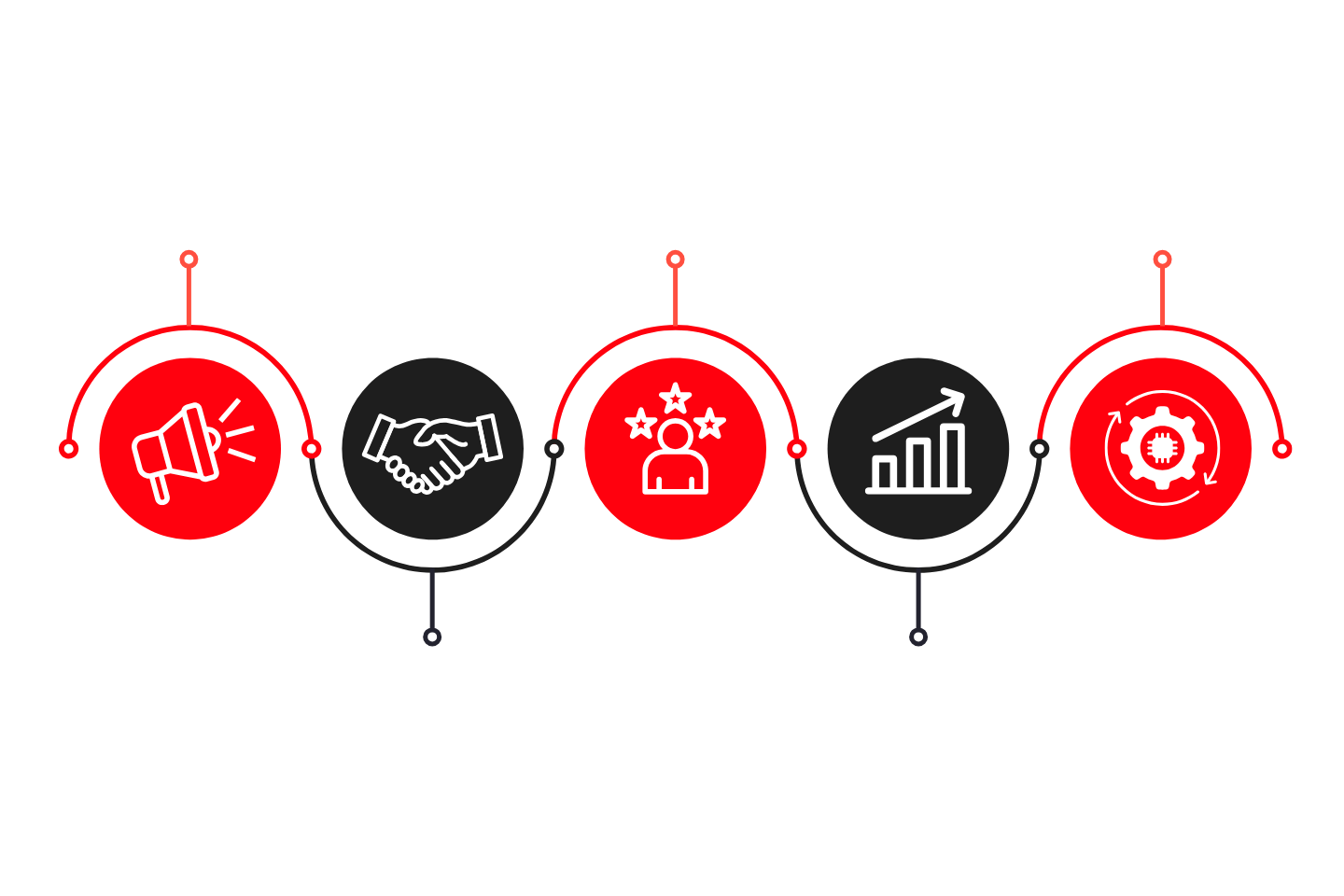
Selecting tools should depend on your company’s size, complexity, and integration capability. Scalability and interoperability are key—choose tools that can grow with your business.
Summary
A strong RevOps tech stack links all customer touchpoints for data-driven decisions. Key tools—CRM, marketing automation, analytics, and integrations—work in a unified ecosystem to ensure consistent metrics, save time, and cut costs. Leading tools include HubSpot, Salesforce, Gong, and Clari.
Data Management in RevOps
1. Building a Single Source of Truth (SSOT)
A Single Source of Truth (SSOT) is a centralized, trusted dataset that all teams rely on for reporting and decisions. It ensures everyone works with the same, accurate information.
RevOps builds SSOT by connecting CRM, marketing automation, and finance tools into one governed data warehouse or analytics layer.
Without SSOT, companies waste hours reconciling conflicting reports—marketing says 500 leads, sales says 400, finance says 350. With SSOT, every number matches across departments.
This transparency builds organizational trust and supports data-driven leadership.
2. Data Hygiene, Enrichment, and Governance
Data hygiene ensures your systems remain clean and useful. Poor data—duplicate records, incomplete fields, outdated info—can cost companies millions annually.
Key practices include:
- Regular cleansing: Removing duplicates and outdated records.
- Validation rules: Preventing junk data entry.
- Enrichment: Adding verified details from external databases (e.g., Clearbit, ZoomInfo).
- Governance: Defining who owns, edits, and audits data.
A healthy data environment fuels better segmentation, accurate forecasting, and confident decision-making.
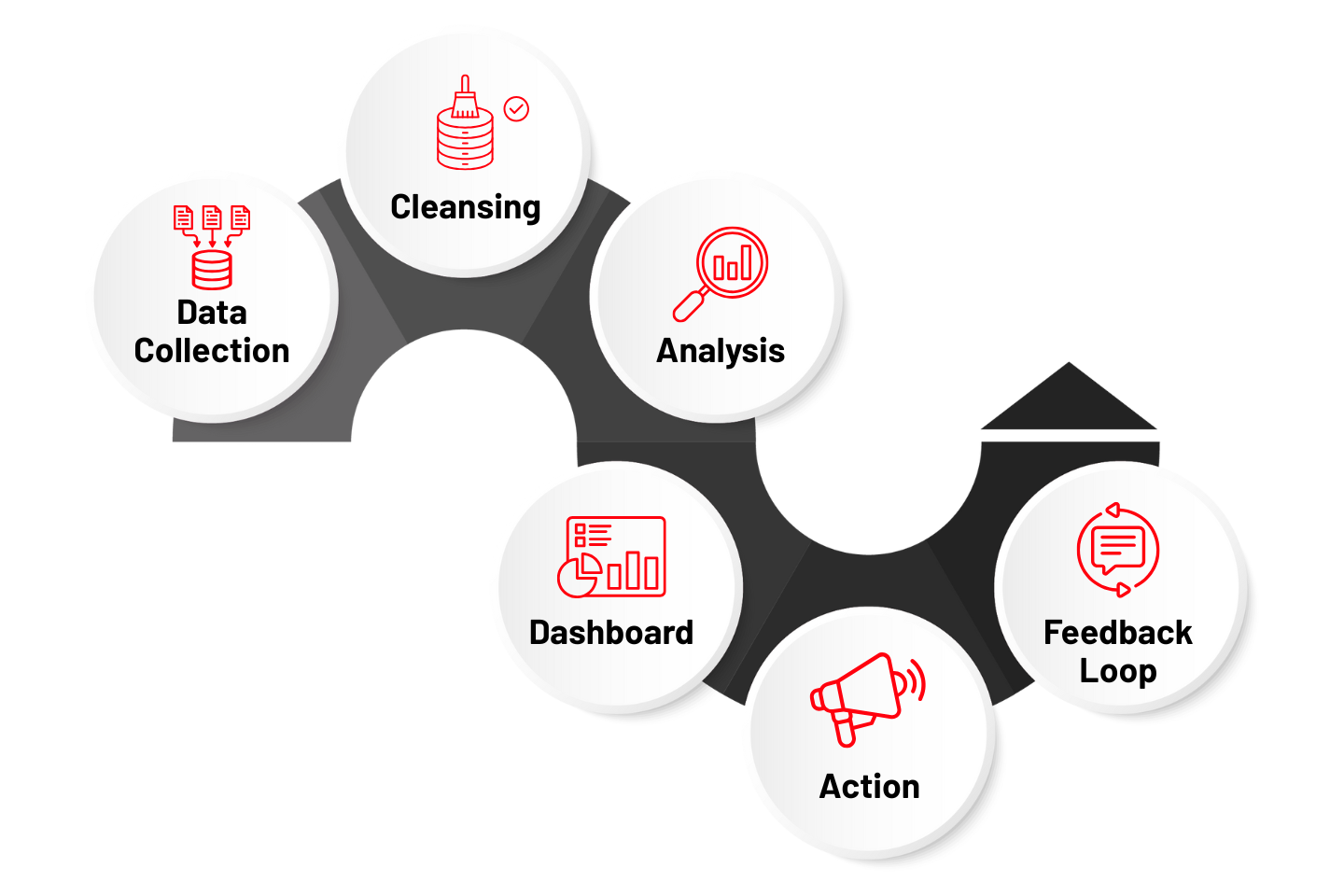
3. Turning Analytics into Action: KPIs and Dashboards
RevOps transforms analytics from static charts into actionable intelligence. Dashboards display key metrics such as:
- MQL → SQL conversion rate
- Pipeline velocity and win rate
- Customer retention and NRR
- Average deal cycle length
But beyond visibility, RevOps ensures insights drive action. For example, if win rates drop, automation can alert managers, trigger training sessions, or adjust lead qualification rules automatically.
Summary
Single Source of Truth (SSOT): Centralized, accurate data ensures all teams work from the same numbers.
Data Hygiene & Governance: Regular cleansing, validation, enrichment, and clear ownership maintain reliable data.
Actionable Analytics: KPIs and dashboards transform insights into immediate actions for performance optimization and continuous improvement.
Automating the Revenue Engine
1. Workflow Automation for Leads, Deals, and Renewals
Automation is the heartbeat of RevOps scalability. Repetitive tasks—lead assignment, follow-ups, renewal reminders—can all be automated using CRM workflows or AI triggers.
For example, when a new lead enters the system, automation can assign it to a sales rep, send a welcome email, and schedule a follow-up task—instantly.
- Renewal workflows can track contract end dates, alert CS teams, and even generate renewal quotes automatically.
- These automations improve response time, reduce human error, and accelerate deal velocity.
2. Using AI for RevOps: Predictive Analytics and Forecasting
AI has become a game-changer in 2025 RevOps. Predictive analytics models can analyze thousands of deal data points to forecast revenue, detect pipeline risks, and even recommend next best actions.
AI tools like Clari, People.ai, or HubSpot AI Assistant deliver real-time insights to sales and marketing teams.
For instance, AI can predict which leads are most likely to close or which accounts are at risk of churn—enabling teams to prioritize high-impact activities.
AI-powered forecasting now achieves up to 90 % accuracy, transforming how revenue leaders plan and execute GTM strategies.
3. Common Automation Mistakes to Avoid
While automation boosts efficiency, over-automation can backfire. Common pitfalls include:
- Automating broken processes – Fix the workflow before automating.
- Ignoring human context – Not every customer interaction should be robotic.
- Lack of monitoring – Unchecked automations can create data errors at scale.
RevOps teams should start small, measure impact, and continuously refine workflows. The best automation complements human expertise—it doesn’t replace it.
Summary
A well-designed tech stack and clean, governed data are the foundation of high-performing RevOps.
Automation + AI elevate efficiency, accuracy, and forecasting precision.
The combination of unified tools, single-source data, and smart workflows forms the true “Revenue Engine.”
Creating a RevOps Strategy
1. Assessing Your Current Business Operations
Before implementing RevOps, conduct a RevOps readiness audit:
- Map your existing revenue processes — from lead generation to renewal.
- Identify data silos and process gaps between marketing, sales, and customer success.
- Review current KPIs — Are marketing and sales metrics aligned? For example, if marketing tracks MQLs but sales focuses on closed deals, you have a misalignment.
- Use frameworks like SWOT (Strengths, Weaknesses, Opportunities, Threats) or RACI (Responsible, Accountable, Consulted, Informed) for clarity.
Example: If your lead-to-close time is 45 days, analyze how RevOps can reduce it by unifying CRM and automation tools.
2. Building a Roadmap to Align Marketing, Sales & CS
Once gaps are identified, design a step-by-step roadmap:
- Short-term (0–3 months): Centralize data, standardize KPIs, and fix communication channels.
- Mid-term (3–6 months): Implement automation, integrate platforms, and introduce RevOps dashboards.
- Long-term (6–12 months): Optimize workflows and introduce AI for predictive insights.
Tip: Adopt a “Crawl–Walk–Run” approach — start small, iterate, and scale.
3. RevOps KPIs: From MQL to NRR
RevOps success is measurable only through the right KPIs.
Track key metrics across the revenue funnel:
RevOps Revenue Growth Funnel
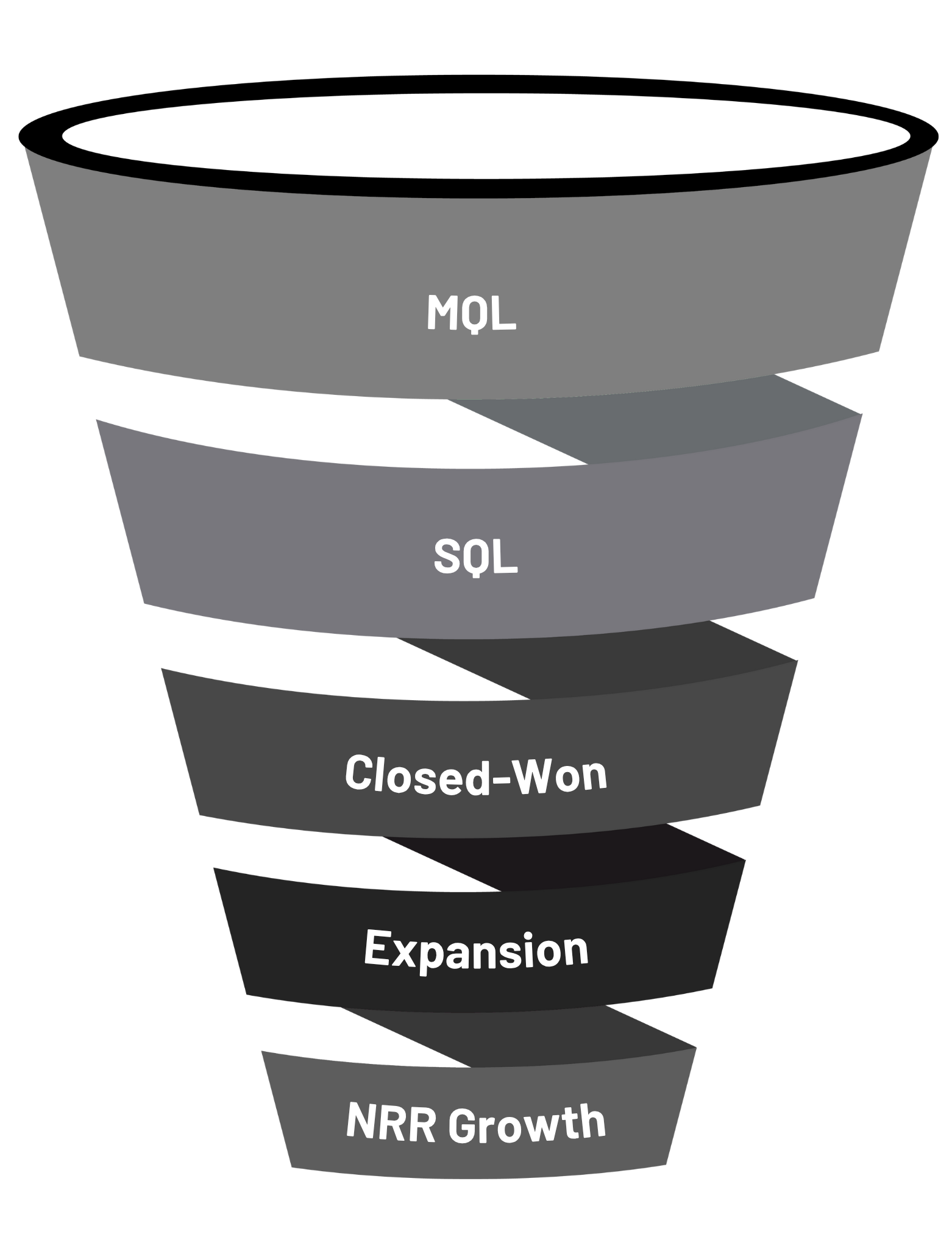
Building a RevOps Team
1. Key RevOps Roles
A mature RevOps function requires multiple specialized roles:
- RevOps Analyst: Focuses on data accuracy, dashboards, and insights.
- Systems Manager: Manages CRM, marketing automation, and integration tools.
- Operations Lead: Oversees alignment across departments and ensures process optimization.
- Enablement Specialist: (Optional) Trains and supports team adoption of tools and workflows.
2. Structuring Small vs. Enterprise RevOps Functions
Small Business:
- 1–2 people handle multiple functions.
- Use cost-efficient, all-in-one tools (like HubSpot or Zoho).
- Focus on automating reporting first.
Enterprise Level:
- Dedicated teams for Marketing Ops, Sales Ops, and CS Ops under one RevOps head.
- Advanced tech stacks like Salesforce, Marketo, Gong, and Clari.
- Data governance becomes critical.
3. Leadership Alignment and Communication Practices
RevOps can only succeed if leadership champions alignment:
- Conduct weekly cross-functional syncs (Marketing + Sales + CS).
- Build a shared revenue dashboard visible to all.
- Leadership should reinforce “One Revenue Goal” instead of department-specific objectives.
- Create RevOps Council — key decision-makers who review progress monthly.
Head of RevOps
1. Systems Manager
2. Data & Insights Analyst
3. Sales/Marketing Ops Specialist
4. Customer Success Ops Specialist
Change Management and Adoption
1. How to Implement RevOps with Minimal Resistance
Resistance comes when people feel RevOps replaces them instead of empowering them.
To prevent this:
- Communicate the “why” — Explain how RevOps makes their jobs easier.
- Start with quick wins (like automating lead assignment).
- Use change champions — early adopters who encourage others.
- Keep transitions gradual — don’t introduce too many tools at once.
Example: If sales teams fear losing control, start with CRM automation that reduces manual data entry instead of changing their full pipeline view immediately.
2. Training Teams and Creating Accountability
- Host tool training sessions for CRM, automation, and analytics dashboards.
- Create role-specific RevOps playbooks (e.g., “Marketing Data Sync Checklist”).
- Define clear ownership — every process or KPI should have an accountable person.
- Use learning management platforms (LMS) or short video tutorials for ongoing enablement.
Fact: According to HubSpot, teams trained under a unified RevOps model see 15–25% faster onboarding for new hires.
3. Measuring RevOps ROI
After implementation, measure impact across efficiency, alignment, and revenue:
- Efficiency Gains: Time saved through automation (e.g., reduced manual reporting).
- Alignment Metrics: Increase in conversion rates or pipeline velocity.
- Revenue Growth: Compare NRR and ARR before and after RevOps.
- Cost Savings: Reduction in tool redundancy.
ROI Formula:
RevOps ROI = (Increased Revenue + Cost Savings – Implementation Cost) / Implementation Cost × 100
RevOps Maturity and Optimization
1. Continuous Improvement through Process Auditing
RevOps isn’t a one-time setup — it’s a continuous optimization cycle.
Process Auditing Steps:
- Define audit cadence: Review key processes (lead routing, forecasting, onboarding) quarterly.
- Gather data: Collect reports from CRM, automation tools, and analytics dashboards.
- Identify friction points: Look for bottlenecks in lead handoffs, reporting delays, or duplicated data.
- Prioritize improvements: Focus on changes that impact revenue velocity first.
- Document outcomes: Create “before vs after” snapshots to track progress.
Example: If lead-to-close time improves from 45 to 30 days after automation, document the exact workflow change for future replication.
2. Benchmarking Performance Across Departments
Benchmarking helps you compare internal performance to industry standards.
Use metrics like:
- Marketing: MQL to SQL conversion rate, Cost per Lead (CPL)
- Sales: Win rate, Average Deal Size
- Customer Success: Net Revenue Retention (NRR), Time-to-Value (TTV)
Sample Benchmark Chart (for infographic):
3. Creating RevOps Playbooks
Playbooks serve as standard operating manuals for revenue teams.
Types of RevOps Playbooks:
- Lead Management Playbook: Defines lead scoring, routing, and follow-up timelines.
- Sales Forecasting Playbook: Outlines data sources, cadence, and reporting format.
- Customer Retention Playbook: Details renewal triggers, CS engagement cadence, and churn alerts.
Benefits:
- Reduces ambiguity across teams.
- Speeds up onboarding for new hires.
- Ensures repeatable success in campaigns and deals.
Tip: Keep playbooks as living documents, updated quarterly to reflect process changes.
Summary
RevOps relies on continuous improvement through process audits to remove bottlenecks and boost revenue. Benchmarking across marketing, sales, and CS highlights gaps and opportunities. Playbooks standardize workflows, speed onboarding, and ensure consistent, repeatable success.
The Future of RevOps
1. The Rise of AI-driven RevOps
Artificial Intelligence is transforming RevOps into a predictive and proactive engine.
Applications of AI in RevOps:
- Predictive Lead Scoring: Machine learning models score leads based on historical conversion patterns.
- Deal Forecasting: AI identifies which deals are at risk based on engagement signals.
- Customer Health Scoring: Predicts churn risk using usage, sentiment, and support data.
Fact: According to Gartner, organizations using AI in RevOps report a 20–30% higher revenue efficiency than those using manual methods.
2. Predictive Revenue Intelligence
Predictive Revenue Intelligence (PRI) uses integrated data from CRM, marketing, and customer success tools to forecast future revenue.
Core Components:
- Data Integration: Pulls data from all revenue systems into one platform.
- Predictive Models: Forecasts bookings, renewals, and churn.
- Action Triggers: Suggests next-best actions (e.g., “Follow up on Deal X – low engagement risk”).
Example Tools:
- Clari
- Gong Forecast
- InsightSquared
Benefits:
- Improves forecast accuracy by up to 40%.
- Reduces pipeline blind spots.
- Aligns leadership around real-time data insights.
3. RevOps-as-a-Service (ROaaS) and Industry Trends
RevOps-as-a-Service (ROaaS) is an emerging business model where specialized agencies manage RevOps for growing companies.
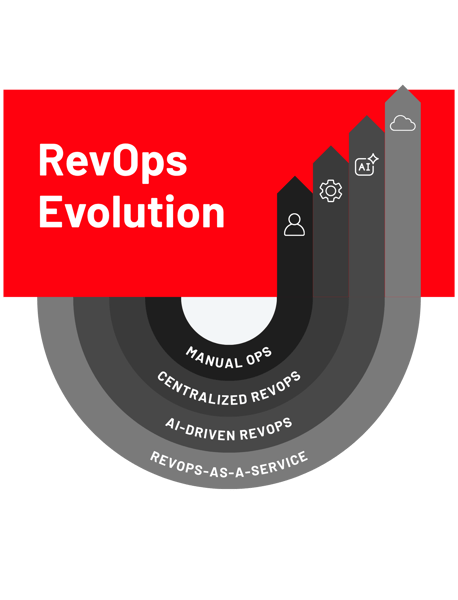
Why it’s rising:
- Startups lack in-house RevOps expertise.
- Outsourcing is cost-effective and faster to deploy.
- ROaaS firms provide pre-built frameworks, dashboards, and integrations.
Trends for 2025–2030:
- Hybrid RevOps models (internal + outsourced).
- RevOps embedded in GTM strategy consulting.
- Increased demand for data governance and privacy-first RevOps systems.
The AI Revenue Optimization Pipeline
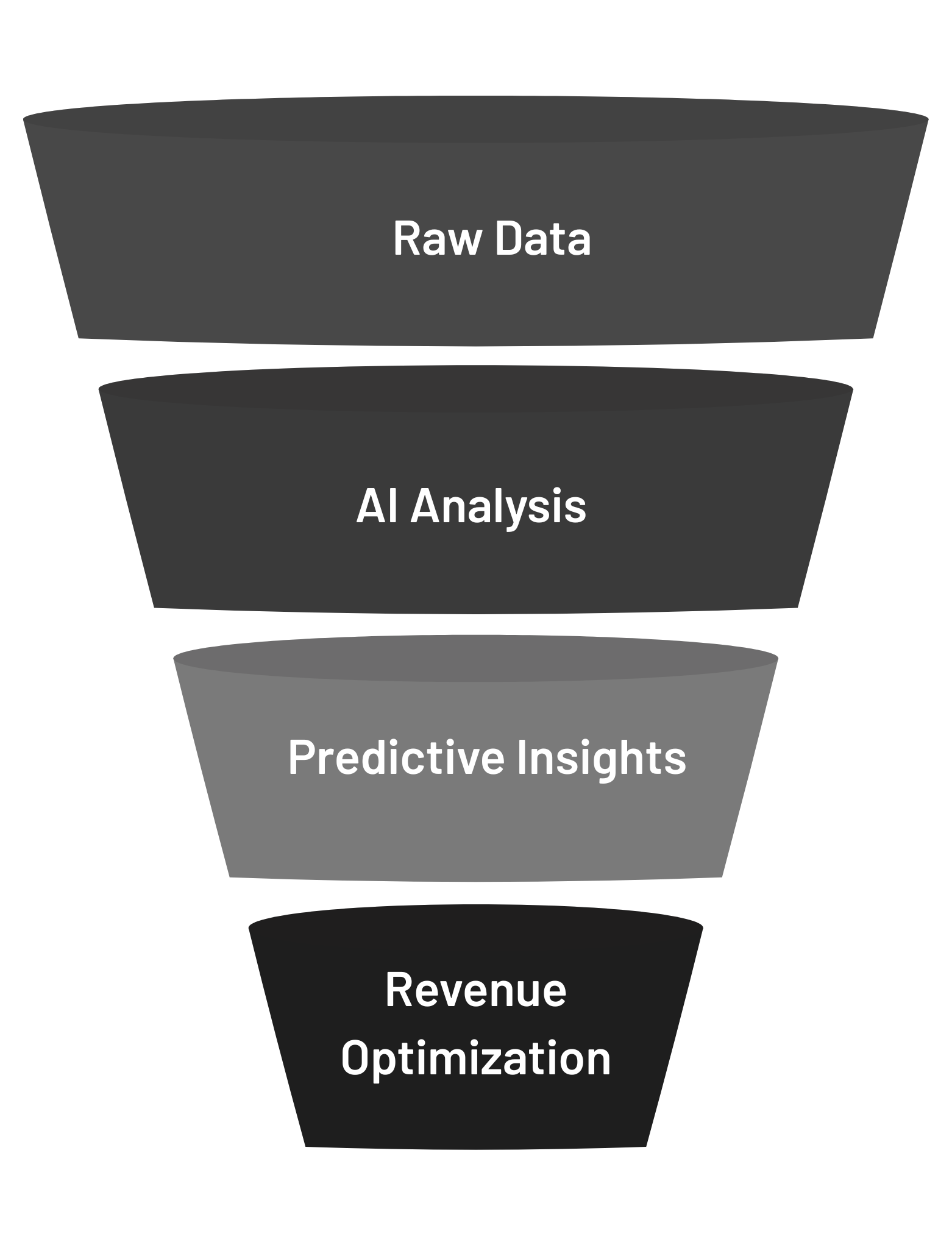
Career in RevOps
1. Emerging RevOps Certifications and Skillsets
Certifications to Explore:
- HubSpot RevOps Certification
- Salesforce Revenue Cloud Specialist
- Pavilion (formerly Revenue Collective) RevOps Program
- RevOps Co-op Training
Core Skillsets Required:
2. RevOps Career Paths and Salary Expectations
Career Growth Path:
RevOps Analyst → RevOps Manager → Head of RevOps → Chief Revenue Officer (CRO)
Average Salary Range (2025 Estimates):
Global Average: $80K – $250K USD depending on region and company size.
3. Building Your Personal RevOps Brand Online
The demand for RevOps professionals is skyrocketing, but so is competition.
To stand out:
- Post RevOps insights on LinkedIn regularly (case studies, dashboards, best practices).
- Join RevOps communities — e.g., RevOps Co-op, Pavilion, or Modern Sales Pros.
- Create content — short tutorials or infographics on alignment, forecasting, or dashboards.
- Showcase certifications and success stories on your profile.
Fact: RevOps professionals with an active online presence have a 3x higher chance of landing leadership roles.
Conclusions
Far far away, behind the word mountains, far from the countries Vokalia and Consonantia, there live the blind texts. Separated they live in Bookmarksgrove right at the coast of the Semantics, a large language ocean. A small river named Duden flows by their place and supplies it with the necessary regelialia. It is a paradisematic country, in which roasted parts of sentences fly into your mouth.
Even the all-powerful Pointing has no control about the blind texts it is an almost unorthographic life One day however a small line of blind text by the name of Lorem Ipsum decided to leave for the far World of Grammar. The Big Oxmox advised her not to do so, because there were thousands of bad Commas, wild Question Marks and devious Semikoli, but the Little Blind Text didn’t listen.
Ready to Unlock Your Revenue Potential?
Let Iteanz Digital design a RevOps engine that drives alignment, automation, and growth.
Sources:
Recent Topics
Stay up to date with what is new in our industry.
.png?width=600&height=360&name=ultimate-seo-tutorial-boost-your-website-traffic-and-rankings%20(2).png)
Ultimate SEO Tutorial: Boost Your Website Traffic and Rankings

GTM Tutorial for Beginners: Learn Go-To-Market Strategies That Work
Master GTM planning, launch strategies, and market growth for business success.


